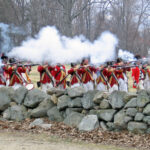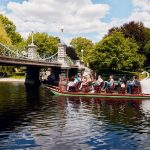6 Quiet New England Nature Spots to Visit This Fall
Looking to get outside this foliage season but want to avoid the crowds? Check out these six quiet New England nature spots to visit this fall.
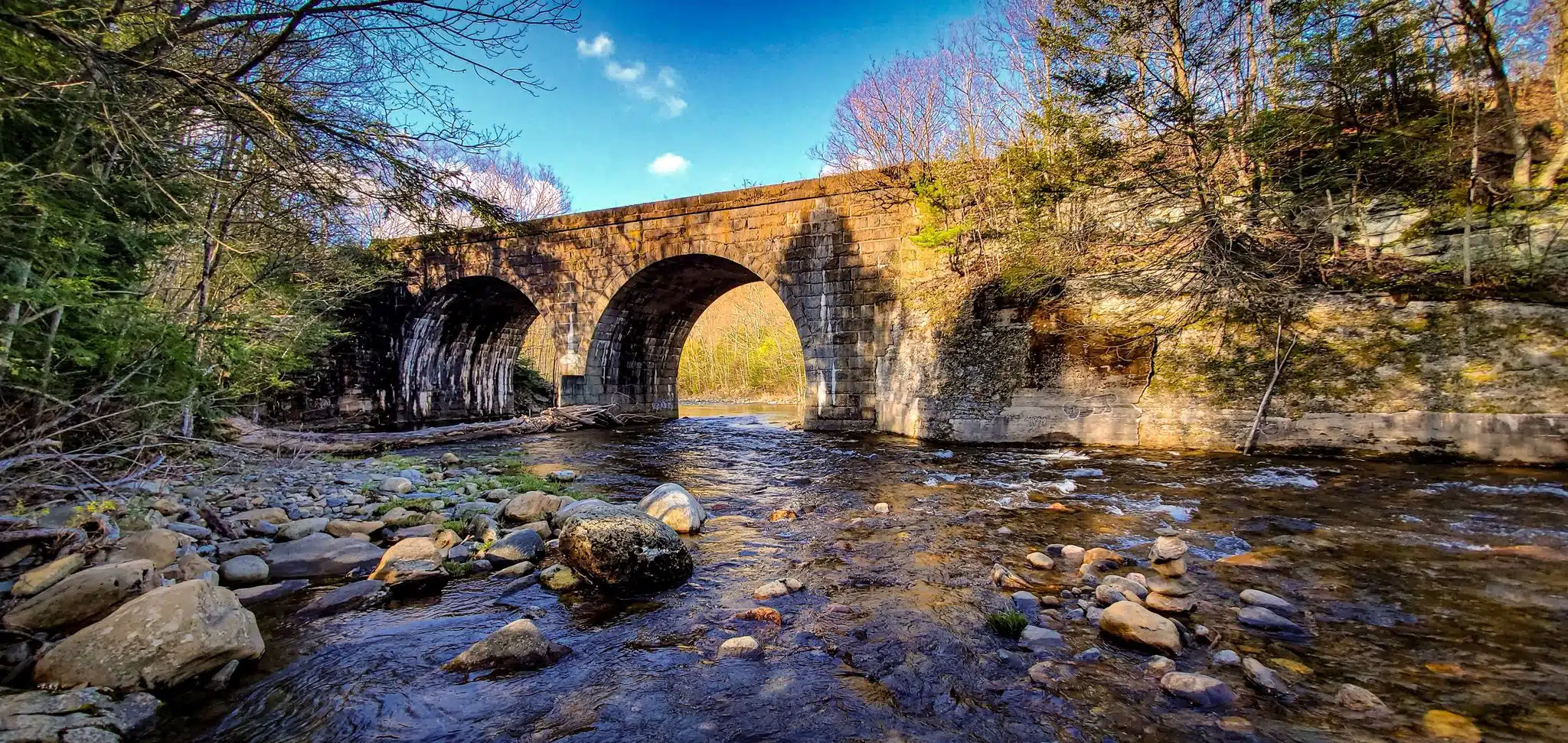
Coffee By Design | Portland, Maine
Photo Credit : Katherine KeenanNew England’s forests, trails, and natural attractions have never been more popular.
Even with limits on attendance and parking, our region’s best-known outdoor spaces are as crowded as ever these days, and for good reason: They are spectacular. Smugglers’ Notch in Vermont comes to mind, as does Franconia Notch in New Hampshire and Acadia National Park in Maine. Mount Greylock in Western Massachusetts and Mount Monadnock in New Hampshire offer breathtaking hikes, as do Mount Major, overlooking Lake Winnipesaukee in New Hampshire, and Vermont’s Mount Philo, which provides vistas of Lake Champlain.
But if you’re trying to avoid crowds while enjoying a beautiful New England nature experience, there are plenty of options for that, too. A great place to start is this round-up of six quiet fall foliage spots, one for each state. They don’t bring in big crowds, but they all have the kinds of hikes and other outdoor activities that are sure to satisfy your need for nature this fall. (And speaking of this fall, don’t miss our official 2020 New England Fall Foliage Forecast!)

Photo Credit : Jim Salge
6 Quiet New England Nature Spots to Visit This Fall
Alternatives to Popular Spots
Grafton Notch, Maine
From Rangeley to the Carrabassett Valley, there are a number of areas in Maine’s rugged western mountains that are custom-made for those looking to escape crowds. Of these, Grafton Notch may be among the busiest during foliage season, but it’s still a far quieter option for families than the nearby White Mountains in New Hampshire. And there’s plenty to do!
Route 26 from Newry to Upton runs through this glacial pass and between the large mountains of Old Speck to the west and Baldpate to the east. The two mountains are connected by the Appalachian Trail, with trailheads in the notch. And while hiking to either summit would be an all-day adventure for most, there are shorter hikes and other natural attractions, too.
The most popular site is Screw Auger Falls, a deep, narrow chasm with some notable waterfalls that’s easily reached from the Grafton Notch State Park parking area on Route 26. Kids will love scrambling around Moose Cave, a quick loop hike from the road. Towering above Moose Cave is Table Rock, an incredible viewpoint on the shoulder of Baldpate Mountain that can be reached via a steep but short hike (about 2.5 miles round-trip).
Continuing north on Route 26 past Upton takes you over the New Hampshire border, where spectacular views await at Umbagog Lake State Park.
Ossipee Mountains, New Hampshire
In the heart of New Hampshire’s Lakes Region is a large, oddly round terrain feature clearly visible on satellite maps. Known as a ring dyke, this is the legacy of an ancient volcano that formed the cluster of mountains that today make up the Ossipee Range.
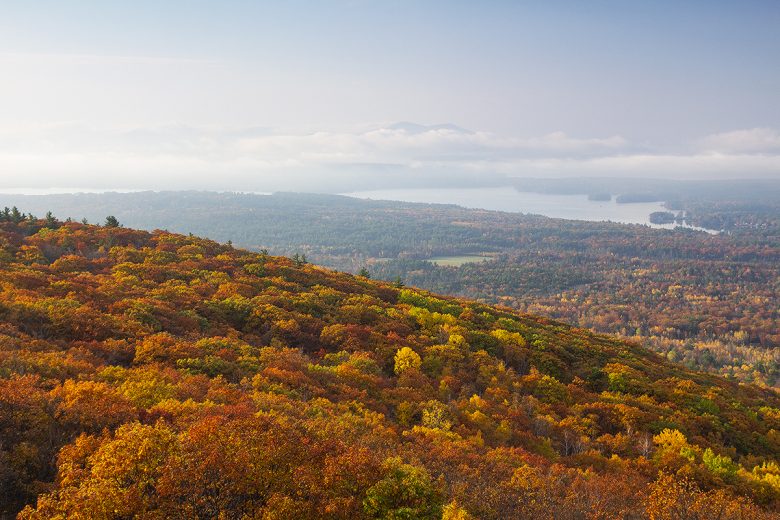
Photo Credit : Jim Salge
Much of the land here is preserved and maintained by the Lakes Region Conservation Trust (LRCT), which provides free access to a network of trails and carriage roads. Popular treks include Bald Knob and Mount Roberts, each around five miles round-trip and offering great views of Lake Winnipesaukee. Mount Shaw, the highest point in the range, is a well-graded 10-mile round-trip hike, with panoramic autumn views of the White Mountains to the north.
If hiking isn’t your thing, you can drive to one of the LRCT’s most popular attractions, the historic mountaintop estate known as Castle in the Clouds (ticket purchase is required to tour the mansion itself). Or, for a unique autumn adventure, take a guided horseback ride along one of carriage roads.
Glastenbury Wilderness, Vermont
Located near Bennington, the Glastenbury Wilderness is a stretch of forest bounded to the south by Route 9, regionally known as the Molly Stark Scenic Byway. It hosts the trailhead for the Long Trail/Appalachian Trail and offers many options for multiday hikes, including a 40-mile section hike north to Manchester.
In the fall, this area is typically quieter than the more prominent mountains along the spine of the Green Mountains, due in part to the effort required to reach its star attraction, Glastenbury Mountain. To get to the fire tower at the summit, you have to hike 11-plus miles each way (though there are alternative stopping points to choose from, including overnight shelters).
Also in the Glastenbury Wilderness is the much shorter hike to Bald Mountain, which has grown in a bit since its naming but still offers views back over Bennington. A balder summit, Harmon Hill, lies just south of Route 9 on the Long Trail.
A good home base for this adventure is Woodford State Park off Route 9, which boasts camping, paddling, and a beautiful trail around Adams Reservoir.
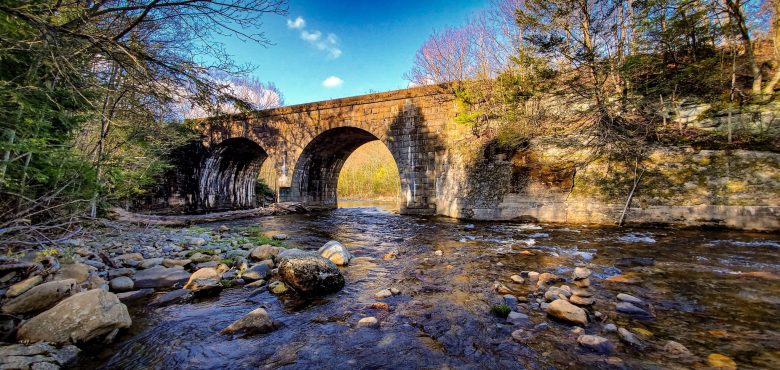
Photo Credit : Bryan Farr | Historic US Route 20
Chester and Becket, Massachusetts
While the Mohawk Trail gets much of the acclaim as the best fall foliage drive in Western Massachusetts, the Jacob’s Ladder Scenic Byway (Route 20) is a worthy quieter alternative. It passes through the town of Chester, which along with neighboring Becket is an appealing area to explore on foot in autumn.
The must-do hike is the Keystone Arches Trail, a five-mile trek that follows the Westfield River past five spectacular historic stone arch railroad bridges. But there are plenty of other options for walking and biking in this area, including Gold Mine Brook Falls in the Chester-Blandford State Forest, and the Chester & Becket Rail Trail, which leads to an old quarry. The steepest hike in the area, Gobble Mountain, is also the most rewarding, leading to a lookout tower with amazing views of the Berkshires.
A handy place to find information on all the local trails (or even plan a road trip to Oregon!) is the new Historic Route 20 visitors center, located right in downtown Chester.
The Quiet Corner, Connecticut
Compared with Connecticut’s northwest corner, home to the famed Litchfield Hills, the northeastern part of the state is overlooked by the fall foliage crowds. However, its farms, forests, and rolling hills have much to offer in the way of sightseeing and outdoor recreation.
The best road through this area is Route 169, a National Scenic Byway that’s worth a trip in itself. But to really get into nature, you’ll want to hop off the route to explore the beautiful state parks nearby.
To the east of the route, Old Furnace State Park and adjacent Ross Pond State Park have an extensive trail network that leads to placid ponds, historic sites, and expansive views of autumn color. There are also boat launches for quiet paddling.
Just to the west of the route, Mashamoquet Brook State Park offers hiking and biking on many well-marked trails, as well as the Wolf Den, an area with ledges, rocks, and caves for endless exploring. A bit farther west is Natchaug State Forest, with still more trails to explore on foot, bike, or horseback.
Exeter, Rhode Island
A scenic byway easily accessed from Providence, Route 102 checks all the boxes for an unforgettable autumn drive. Even better, its southern terminus is not far from Exeter, where you’ll find quiet refuges that are perfect for family hikes.
The Fisherville Brook Wildlife Refuge, an Audubon Society property, has five miles of varied Rhode Island landscapes to explore, including rare cedar swamps. The forests are predominantly oak and beech, though, which don’t turn until early November.
Almost next door to this refuge, the Nature Conservancy maintains the Cuttyhunk Preserve for foot travel only. This parcel adds another 2.5 miles to trails through forests of young birches and beech. There are also some fine ledges and rock outcroppings for taking in more distant views.
Which quiet New England nature spots would you add to the list? Let us know in the comments below!

